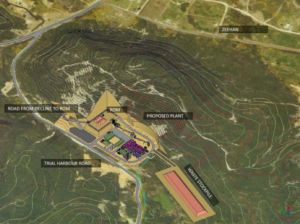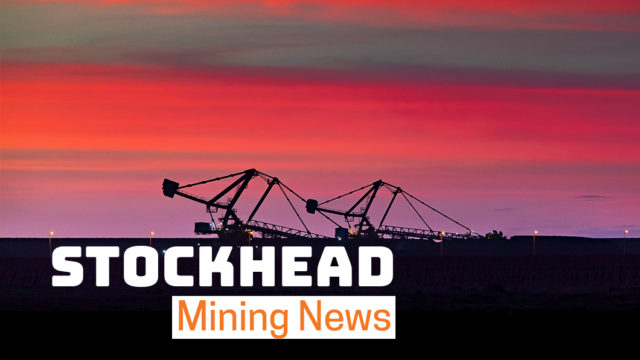Special Report: Heemskirk is expected to be profitable throughout the tin price cycle, Stellar says, with a cost structure comparable to Australia’s oldest and largest tin mine, Renison.
Stellar Resources’ Heemskirk tin project in Tasmania is the highest-grade undeveloped tin project in Australia, and the second highest in the world.
This is an advanced, tier 1 project in a fantastic jurisdiction within an established and supportive mining district on the West Coast of Tasmania.
Right next door is Renison, Australia’s oldest and largest tin mine which started as a five-year mine life in 1968 and is still going strong. Right now, Renison is over 1km deep.
Stellar believes that, eventually, it could be sitting on something similar.

Renison long projection with overlay of the Heemskirk deposits.
But for starters, Stellar wants to build a modest 0.35 mtpa underground development producing ~24,000t of tin metal over an initial 11-year life.
The explorer has just released its project development scoping study which confirms that Heemskirk is expected to be profitable through the tin price cycle.
Miners usually undertake up to three different types of studies to see whether or not a resource can be mined economically. These are — in order of importance — scoping, preliminary feasibility (PFS), and bankable feasibility (BFS).
Two of the most important numbers in any project study are capital and operating costs.
Heemskirk will cost a very manageable $57 million to build (capital cost), which Stellar hopes to pay back within three years.
“The low $57m start-up capital cost is a function of sequential development of the underground Queen Hill and Severn deposits and adherence to ‘just in time’ capital development,” Stellar managing director Peter Blight says.
“Prefabrication of processing plant modules offsite and rapid assembly onsite also contributes to low up-front cost.”

That low upfront capital cost includes all processing infrastructure.
And then there’s the production all in sustaining costs (AISC) of ~$US13,100/t.
AISC is good measure to evaluate the profitability of a project because it includes everything, from mining, refining and transport, through to administration and exploration.
Heemskirk’s AISC compare favourably with the study tin price assumption of $US20,000/t and ‘bottom of the cycle’ tin prices of ~$US16,000/t.
It means that Stellar will still make about $US3000/t clear profit at the very bottom of the price cycle, and around $US7,000/t clear profit based on the average tin price over the last 10 years of US$20,000/t.
Another benefit is that the time between breaking ground to first cashflow will be quick.
“Development of the near-surface Queen Hill deposit first means that ore can be delivered to the mill within six months of commencing the decline and initial sales can occur within another three months,” Blight says.
“The scoping study has shown that the Heemskirk Tin Project has attractive economics and remains robust within the majority of tin price and exchange rate scenarios considered in our sensitivity analysis”.
“The next step for Heemskirk, subject to funding, is to convert upgrade the resource to a probable ore reserve and complete a Pre-Feasibility Study.”
This story was developed in collaboration with Stellar Resources, a Stockhead advertiser at the time of publishing.
This story does not constitute financial product advice. You should consider obtaining independent advice before making any financial decisions.
You might be interested in













